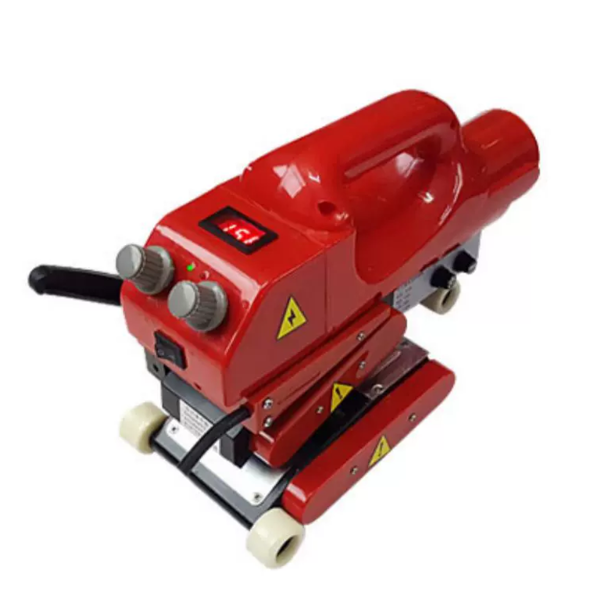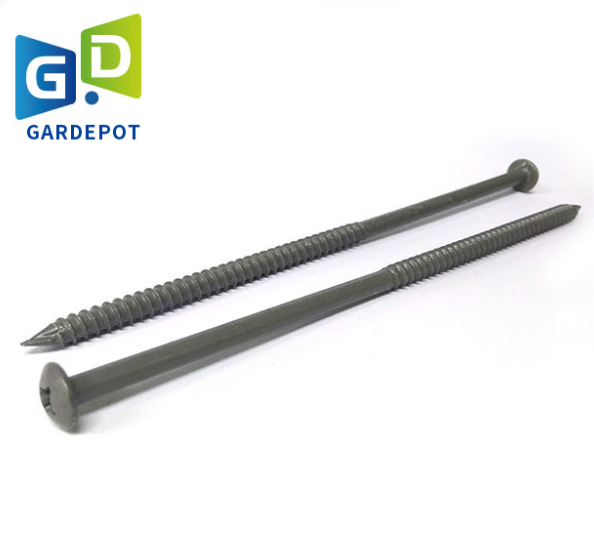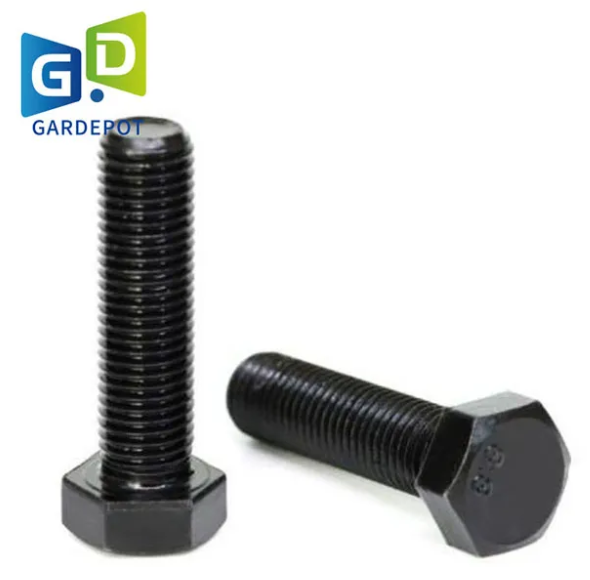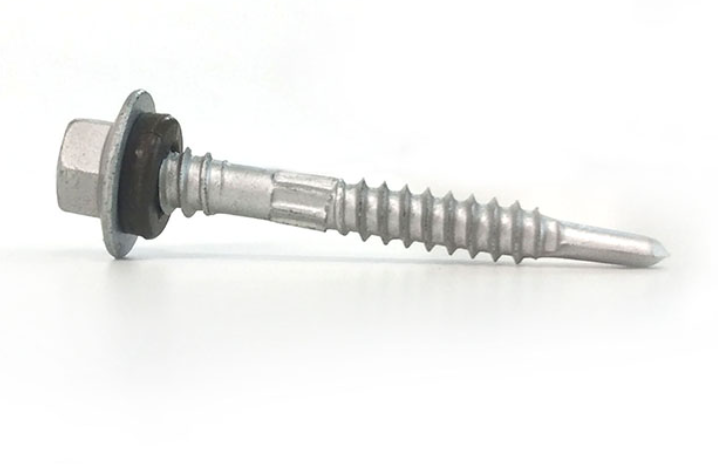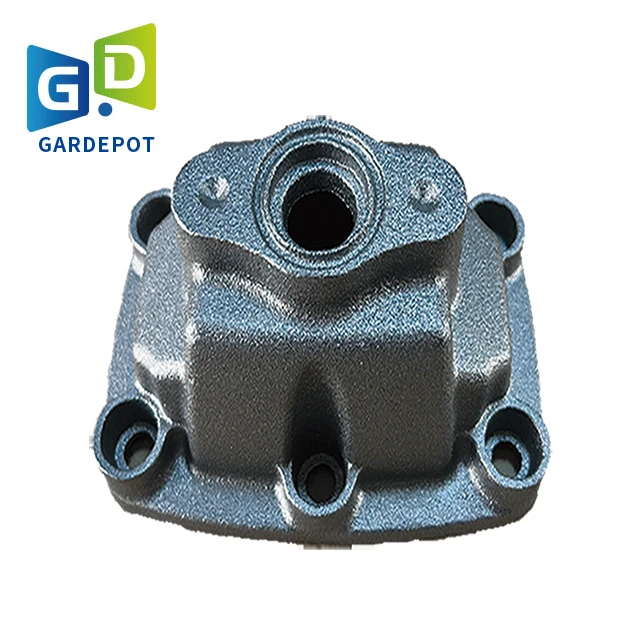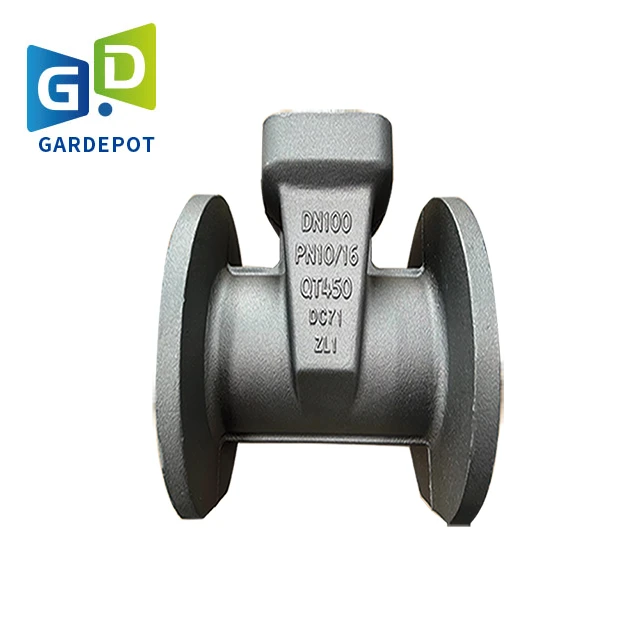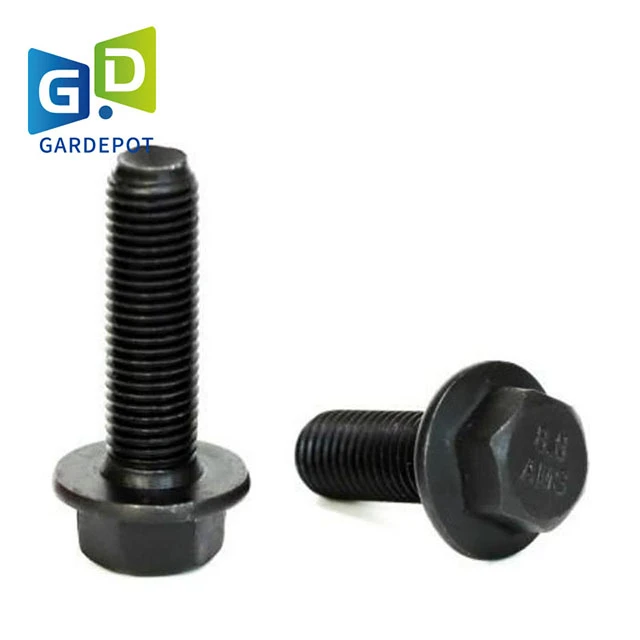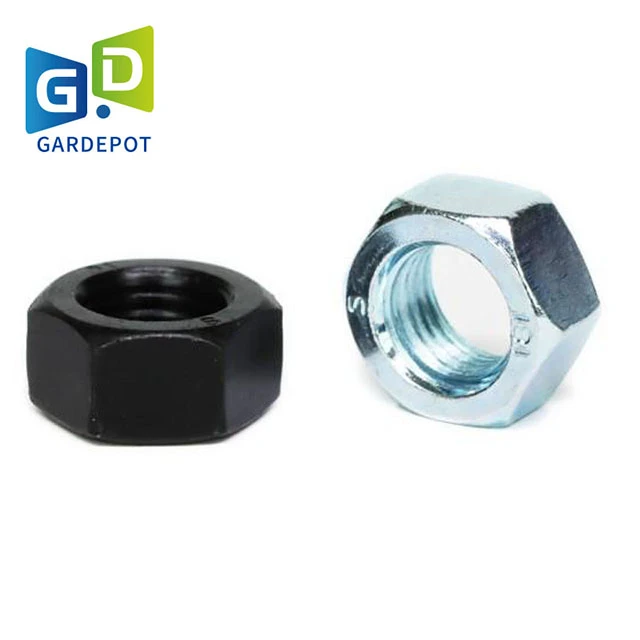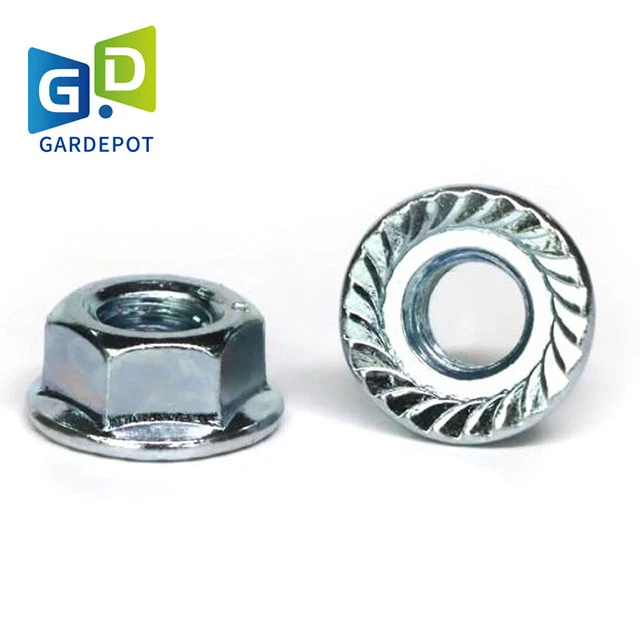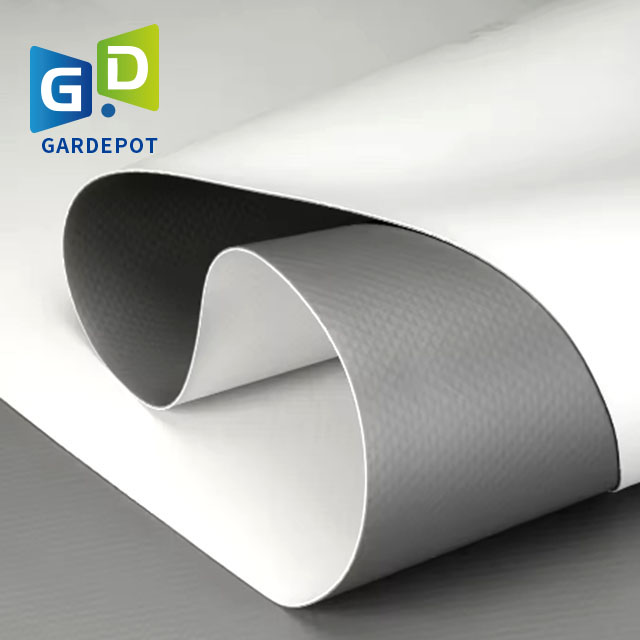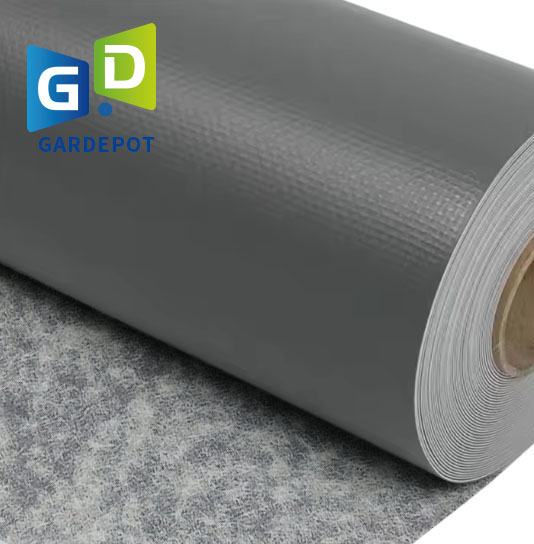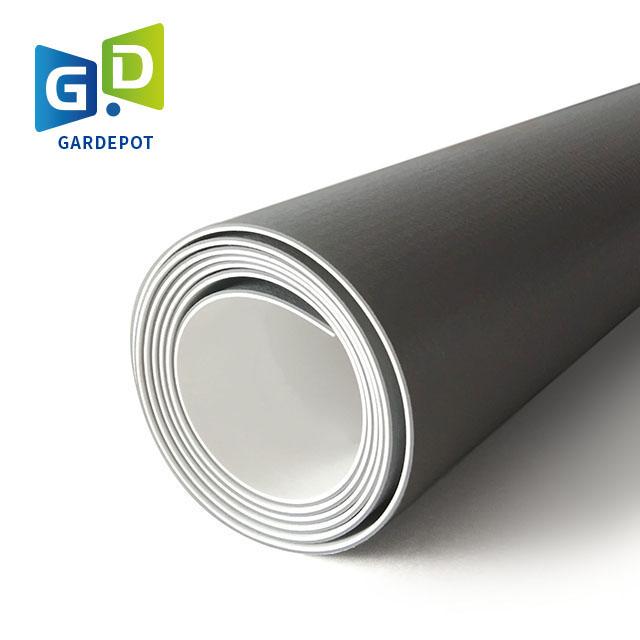Rubber Roofing Membrane Cost: EPDM & TPO Options
Navigating the Landscape of High-Performance Roofing Membranes: An In-Depth Analysis
In the dynamic world of commercial and industrial infrastructure, the selection of roofing materials stands as a paramount decision, directly impacting operational efficiency, energy consumption, and long-term asset integrity. Among the myriad options available, high-performance roofing membranes, particularly those categorized under "rubber roofing," have emerged as a dominant choice due to their exceptional durability, flexibility, and weather resistance. This comprehensive guide delves into the intricate factors surrounding the cost of rubber roofing membrane, extending beyond the mere purchase price to encompass the total cost of ownership, including installation, maintenance, and projected lifespan. We will explore the nuanced differences between various membrane types, such as EPDM, TPO, and our high-quality PVC Membrane, dissecting their technical specifications, manufacturing processes, and real-world application advantages. Understanding the true value proposition of these advanced roofing solutions requires a holistic perspective that evaluates initial outlay against decades of reliable performance, minimal upkeep, and significant energy savings. For B2B decision-makers, engineers, and facility managers, this entails a deep dive into material science, installation methodologies, and the economic implications of choosing a superior roofing system. The emphasis here is on providing a data-driven framework that supports informed investment decisions, ensuring that the chosen membrane not only meets immediate budgetary constraints but also delivers sustained value and resilience against diverse environmental challenges, ultimately safeguarding critical assets and operations. The strategic selection of a roofing membrane is not merely a procurement task; it is an engineering decision with far-reaching consequences for a facility's structural health, energy footprint, and operational continuity in the face of increasingly unpredictable weather patterns and stringent energy efficiency mandates.
The market for industrial and commercial roofing has witnessed a significant evolution, driven by advancements in polymer science and a heightened demand for sustainable and resilient building materials. Rubber roofing membranes, primarily EPDM (Ethylene Propylene Diene Monomer) and TPO (Thermoplastic Polyolefin), alongside advanced PVC (Polyvinyl Chloride) membranes, represent the zenith of this evolution, offering unparalleled performance characteristics that distinguish them from traditional asphalt-based systems. These modern membranes are engineered to withstand extreme temperatures, UV radiation, chemical exposure, and mechanical stresses, making them ideal for a wide array of industrial applications, from petrochemical facilities and manufacturing plants to large-scale commercial complexes and data centers. The initial evaluation of the cost of rubber roofing membrane must, therefore, be contextualized within its lifecycle benefits, which often include a service life extending well beyond 30-50 years, significantly reducing the frequency and disruption of roof replacements. This long-term perspective is crucial for businesses seeking to optimize their capital expenditure and operational budgets. Moreover, the inherent flexibility and lightweight nature of these membranes simplify installation, reducing labor costs and project timelines, while their reflective properties contribute to substantial energy savings by mitigating the urban heat island effect and reducing cooling loads. Our analysis will systematically break down the factors contributing to the overall cost of rubber roofing membrane, including material composition, thickness variations, installation techniques like `installing rubber roof membrane`, and the specialized accessories required for a robust system. By providing granular insights into these variables, we aim to equip stakeholders with the knowledge necessary to accurately forecast expenditures and justify investments in high-performance roofing solutions that deliver both immediate operational advantages and enduring long-term value, safeguarding both physical assets and financial returns in a competitive industrial landscape.
The Manufacturing Mastery: Crafting High-Performance Roofing Membranes
The production of high-performance roofing membranes, whether EPDM, TPO, or PVC, is a sophisticated industrial process rooted in advanced polymer chemistry and precision engineering, designed to impart the properties necessary for decades of reliable service in harsh environmental conditions. The fundamental raw materials for EPDM rubber roofing membranes typically include synthetic rubber polymers (ethylene and propylene monomers), carbon black for UV stability and reinforcement, various fillers (such as talc or calcium carbonate) to control properties and reduce cost, processing aids, and curing agents (sulfur- or peroxide-based systems) for vulcanization. The manufacturing journey begins with precise material compounding, where all raw ingredients are meticulously weighed and mixed in large industrial blenders, often Banbury mixers, to create a homogeneous rubber compound. This step is critical, as it determines the final physical properties of the membrane, including its tensile strength, elongation, and resistance to tearing. Following compounding, the material undergoes a process known as calendering, where the rubber compound is fed through a series of heated rollers to form continuous sheets of the desired `epdm roof membrane thickness`. The control over temperature, pressure, and roller speed during calendering is paramount to achieving uniform thickness and surface finish across the membrane. Subsequently, the sheets enter a vulcanization or curing chamber, typically a large autoclave, where they are subjected to specific temperatures and pressures for a defined period. This process cross-links the polymer chains, transforming the pliant rubber compound into a durable, elastic, and thermoset material that can withstand extreme temperatures and environmental stresses without deforming. For thermoplastic membranes like TPO and PVC, the process often involves extrusion and calendering, where polymers are heated until molten and then pressed into sheets, with layers often reinforced with polyester scrims for enhanced dimensional stability and puncture resistance. Unlike EPDM, TPO and PVC membranes are thermoplastic, meaning they can be heat-welded, which offers distinct advantages in `installing rubber roof membrane` and seaming. Throughout the entire manufacturing chain, rigorous quality control (QC) protocols are embedded. This includes continuous inline monitoring of thickness, width, and surface quality, as well as offline laboratory testing of physical properties such as tensile strength (ASTM D4637 for EPDM, ASTM D6878 for TPO, ASTM D7546 for PVC), elongation, tear resistance (ASTM D624), puncture resistance, and low-temperature flexibility (ASTM D2137). Adherence to international standards like ISO 9001 for quality management and ISO 14001 for environmental management is not just a certification; it's a testament to a manufacturer's commitment to producing membranes that consistently meet or exceed industry benchmarks. The expected service life of these membranes, when properly manufactured and installed, often exceeds 30-50 years, significantly reducing the lifecycle cost of rubber roofing membrane by deferring costly replacements. These membranes find extensive application across diverse industries, including petrochemical (due to chemical resistance), metallurgy, power generation, and water management systems (for reservoirs and containment liners), where their exceptional impermeability, resistance to corrosion, and energy-saving cool roof properties—especially with light-colored TPO and PVC—deliver tangible operational advantages. The precision and technological sophistication in manufacturing directly translate into the superior performance and long-term cost-effectiveness that B2B clients demand for their critical infrastructure.
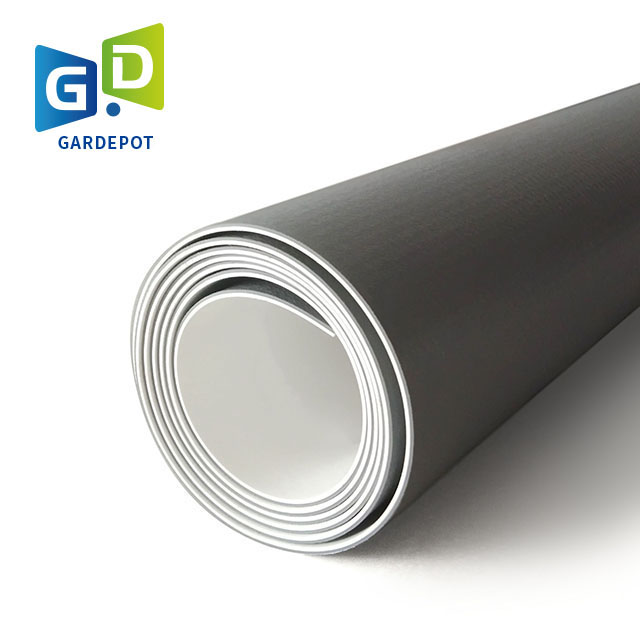
Fig. 1: Conceptual illustration of high-performance roofing membrane manufacturing emphasizing quality control.
The meticulous process of manufacturing advanced roofing membranes, as detailed, directly contributes to their superior performance characteristics and, by extension, influences the overall cost of rubber roofing membrane over its extensive lifespan. Each stage, from the precise compounding of raw materials to the final rigorous quality checks, is engineered to ensure the membrane's resilience, longevity, and functional integrity in diverse and often challenging industrial environments. For instance, the exact formulation of polymers, plasticizers, UV stabilizers, and flame retardants in PVC membranes is critical for achieving their exceptional resistance to chemicals, punctures, and fire, distinguishing them from other rubber roofing types. The use of advanced calendering and extrusion techniques ensures consistent `epdm roof membrane thickness` and uniform material distribution, eliminating weak spots that could compromise the membrane's performance under stress. Furthermore, the integration of polyester or fiberglass reinforcement scrims within membranes like TPO and PVC significantly enhances their dimensional stability, preventing shrinkage and expansion that could lead to membrane fatigue and failure over time. These internal reinforcements also boost tear and puncture resistance, which is vital for roofs exposed to foot traffic, equipment, or potential falling debris. The curing process for EPDM, or the highly controlled cooling for TPO and PVC after extrusion, locks in the molecular structure, providing the membrane with its long-term elasticity, resistance to weathering, and flexibility across a wide temperature range. This inherent flexibility is crucial for accommodating structural movements and thermal expansion/contraction of the building, preventing cracking or tearing. Moreover, the manufacturing process is often tailored to specific application requirements; for example, membranes designed for extreme cold regions might incorporate specialized plasticizers to maintain flexibility at sub-zero temperatures, while those for chemical processing plants will have enhanced chemical resistance. The stringent adherence to international testing standards, such as ASTM for physical properties, FM Global for fire and wind uplift resistance, and UL for fire classifications, guarantees that the membranes will perform as specified under real-world conditions. These certifications not only assure product quality but also play a significant role in insurance underwriting and regulatory compliance for industrial facilities. The advanced manufacturing methodologies and quality assurance embedded in the production of these membranes directly translate into a product that offers superior energy efficiency—through properties like high solar reflectivity (cool roofs), particularly with white TPO and PVC—and exceptional resistance to environmental degradation, including UV radiation, ozone, and biological growth. The resulting reduction in energy consumption for cooling and heating, coupled with minimal maintenance requirements throughout the membrane's extended service life, ultimately contributes to a lower total cost of ownership, making the initial investment in the cost of rubber roofing membrane a strategic and economically sound decision for industrial and commercial entities.
Key Technical Parameters and Performance Metrics
Selecting the optimal roofing membrane for industrial and commercial applications necessitates a deep understanding of key technical parameters that dictate performance, durability, and ultimately, the long-term cost of rubber roofing membrane. Beyond the initial purchase price, the true economic viability of a roofing system hinges on its ability to withstand environmental stressors, maintain structural integrity, and contribute to energy efficiency over its projected lifespan. One of the primary considerations is membrane thickness, typically measured in mils (thousandths of an inch) or millimeters. For instance, common `epdm roof membrane thickness` ranges from 45 mil (1.14 mm) to 90 mil (2.29 mm), while TPO and PVC membranes are often available in 45, 60, or 80 mil thicknesses. A thicker membrane generally offers enhanced puncture resistance, superior tear strength, and a longer service life, making it a more robust choice for high-traffic roofs or those exposed to severe weather, though it will incrementally increase the initial cost of rubber roofing membrane. Tensile strength measures the membrane's ability to resist breaking under tension, expressed in pounds per square inch (psi) or pascals (Pa). High tensile strength is crucial for preventing membrane rupture due to wind uplift, thermal expansion/contraction, or structural movement. Closely related is elongation, which quantifies how much the membrane can stretch before breaking, typically presented as a percentage. EPDM is renowned for its high elongation (often 300-600%), allowing it to accommodate significant building movement without tearing, while TPO and PVC offer good, though generally lower, elongation properties (often 150-250%). Tear resistance (e.g., ASTM D624 for EPDM, ASTM D6878 for TPO) indicates the force required to propagate a tear once initiated, a critical factor for resisting damage from sharp objects or stress concentrations. Puncture resistance measures the membrane's ability to resist penetration from sharp objects, a key concern for roofs subjected to maintenance traffic, tools, or falling debris. These mechanical properties are rigorously tested to meet industry standards like ASTM, ensuring membranes can withstand the rigors of installation and decades of service. Fire rating is another paramount safety parameter, often determined by tests like UL 790 (ASTM E108), which classifies membranes based on their ability to resist fire propagation from external sources. Compliance with specific fire classifications (Class A, B, or C) is often mandated by building codes and insurance requirements, influencing material choice and overall project complexity. UV resistance and ozone resistance are critical for membrane longevity, as prolonged exposure to sunlight and atmospheric ozone can degrade polymers, leading to cracking and embrittlement. Formulations including carbon black in EPDM, and specialized additives in TPO and PVC, are designed to counteract these effects, ensuring long-term flexibility and integrity. Furthermore, chemical resistance is a vital attribute for industrial applications where roofs may be exposed to corrosive fumes, spills, or industrial effluent; PVC membranes, for instance, excel in this regard due to their inherent chemical inertness. The combination of these technical specifications directly impacts the membrane's resilience, maintenance requirements, and ultimately, its total lifecycle value, making a thorough analysis indispensable for responsible capital planning in B2B contexts.
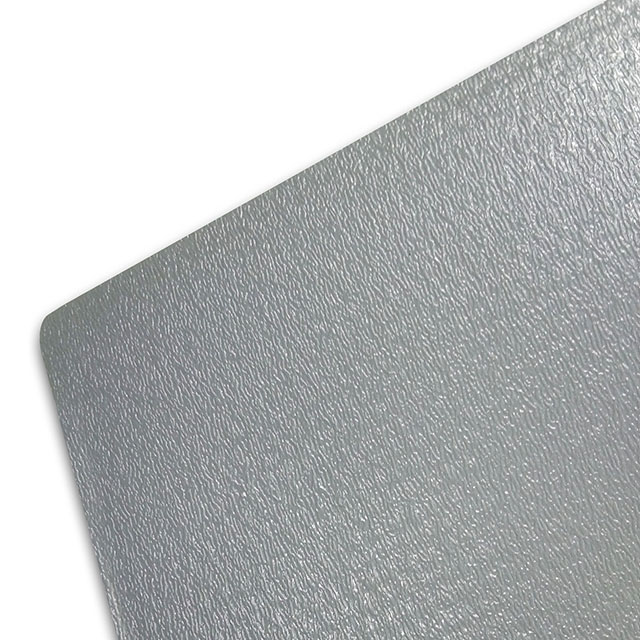
Fig. 2: Advanced roofing membrane illustrating durable and flexible properties.
The detailed examination of technical parameters provides a robust framework for understanding the intrinsic value and performance capabilities that justify the cost of rubber roofing membrane. Beyond the static physical properties, the dynamic performance of these membranes under real-world conditions, particularly their interaction with temperature fluctuations and moisture, is equally critical. For example, the service temperature range of a membrane defines the extreme temperatures it can withstand without degradation or loss of performance. EPDM typically performs well in very cold climates, maintaining flexibility down to -40°C (-40°F), while TPO and PVC also offer excellent cold weather performance, albeit with slight variations depending on their specific formulations. High-temperature resistance is also crucial, especially for dark-colored membranes or those installed in hot climates, where surface temperatures can exceed 70°C (158°F). Water vapor permeance is another significant factor, dictating how easily water vapor can pass through the membrane. While roofing membranes are designed to be impermeable to liquid water, the control of vapor drive is essential to prevent moisture accumulation within the roof assembly, which can lead to insulation degradation, structural damage, and mold growth. Membranes with low water vapor permeance help maintain the thermal performance of the roof system, contributing to long-term energy efficiency. Solar reflectivity index (SRI) and thermal emissivity are crucial for "cool roof" applications, particularly relevant for reducing energy consumption in commercial and industrial buildings. Light-colored TPO and PVC membranes, with high SRI values, reflect a significant portion of solar radiation, keeping the roof surface cooler and reducing the heat island effect, which translates directly into lower air conditioning costs. This energy saving can significantly offset the initial cost of rubber roofing membrane over time. Furthermore, the weldability of thermoplastic membranes like TPO and PVC is a distinct technical advantage. Heat welding creates a monolithic, homogenous seam that is often stronger than the membrane itself, offering superior protection against water ingress compared to adhesive-seamed EPDM systems. This robust seaming technology is a key factor in the long-term integrity and watertightness of the roof system, minimizing future repair costs. The reinforcement within membranes, typically a polyester scrim, plays a vital role in enhancing tear and puncture resistance, as well as dimensional stability. The type and density of this scrim vary by manufacturer and product line, directly impacting the membrane's mechanical performance. Understanding these multifaceted technical attributes, as summarized in the table below, empowers decision-makers to select a roofing solution that is not only cost-effective in the short term but also provides unparalleled long-term protection, energy savings, and operational reliability for their critical assets, ensuring the long-term value derived from the initial `cost of rubber roofing membrane` investment.
| Parameter | EPDM Membrane | TPO Membrane | PVC Membrane (Gardepota) |
|---|---|---|---|
| Primary Material | Synthetic Rubber (Ethylene Propylene Diene Monomer) | Thermoplastic Polyolefin | Polyvinyl Chloride |
| Typical Thickness | 45, 60, 90 mil (1.14 - 2.29 mm) | 45, 60, 80 mil (1.14 - 2.03 mm) | 36, 48, 60, 80 mil (0.91 - 2.03 mm) |
| Tensile Strength (ASTM D4637/D6878/D7546) | 1500-2000 psi | 2000-3000 psi | 2000-3500 psi (Excellent) |
| Elongation at Break | 300-600% | 150-250% | 200-300% (High flexibility) |
| Tear Resistance (ASTM D624) | 180-200 lbf/in | 250-350 lbf/in | 300-400+ lbf/in (Superior) |
| Puncture Resistance | Good | Very Good | Excellent, especially with reinforcement |
| Seam Method | Adhesive/Tape | Heat Welded | Heat Welded (Strongest seams) |
| UV Resistance | Excellent (with Carbon Black) | Very Good | Excellent (with additives) |
| Chemical Resistance | Good (Limited to certain chemicals) | Good (Limited to certain chemicals) | Excellent (Wide range of chemicals) |
| Typical Life Expectancy | 30-50+ years | 20-30+ years | 30-50+ years (Long-lasting) |
| Average Material Cost (per sq ft) | $0.70 - $1.20 | $0.80 - $1.30 | $0.90 - $1.50 (Initial cost of rubber roofing membrane varies) |
Factors Influencing the Overall `Cost of Rubber Roofing Membrane` and Project Value
The comprehensive assessment of the cost of rubber roofing membrane extends far beyond the material price tag, encompassing a multitude of variables that collectively define the total project expenditure and long-term value. For industrial and commercial decision-makers, a granular understanding of these factors is essential for accurate budgeting and strategic investment. Firstly, the material type itself is a primary determinant. While `tpo epdm roofing` membranes are widely used, their inherent chemical compositions, manufacturing complexities, and performance attributes lead to distinct pricing structures. EPDM, being a thermoset elastomer, often has a lower base material cost per square foot compared to `tpo epdm roofing` or PVC, but its installation process typically requires adhesives for seaming, which adds to the accessory costs and labor. TPO and PVC, being thermoplastics, are often slightly higher in material cost but benefit from heat-welded seams, which can potentially reduce long-term maintenance by creating more robust, monolithic connections. Secondly, membrane thickness plays a significant role; a thicker `epdm roof membrane thickness` (e.g., 90 mil vs. 45 mil) will naturally incur a higher material cost but offers enhanced durability, puncture resistance, and a longer warranty period, translating to lower lifecycle costs and superior asset protection. The roll size and width also influence efficiency and waste; larger, custom-width rolls can reduce the number of seams and optimize installation time, indirectly impacting labor costs. Thirdly, installation complexity is a major cost driver. The intricate process of `installing rubber roof membrane` involves skilled labor, specialized equipment, and adherence to manufacturer specifications. Factors like the roof's geometry (number of penetrations, HVAC units, skylights), pitch, accessibility, and existing roof tear-off requirements significantly escalate labor hours and project duration. A multi-layered system, requiring insulation, vapor barriers, and cover boards, also adds to material and labor costs. Fourthly, accessories and flashing materials are indispensable and contribute substantially to the overall cost of rubber roofing membrane. This includes adhesives, primers, fasteners, termination bars, pre-fabricated corners, pipe boots, and flashing details for parapet walls and equipment curbs. The quality and type of these accessories are critical for the roof's long-term integrity, making their selection as important as the membrane itself. Fifthly, geographical location impacts cost due to varying labor rates, shipping costs, and regional regulatory requirements. Market demand and supply dynamics can also cause price fluctuations. Sixthly, the manufacturer and brand reputation command different price points, reflecting variations in product quality, research and development, warranty backing, and technical support. Reputable manufacturers often invest more in quality control and product innovation, justifying a higher initial `cost of rubber roofing membrane` with superior long-term performance and reliability. Lastly, the warranty provided by the manufacturer is a critical financial consideration. Longer, more comprehensive warranties (e.g., 20-30 years for material and labor) come at a premium but offer significant risk mitigation and peace of mind, protecting the investment against premature failure. Ultimately, evaluating the cost of rubber roofing membrane requires a comprehensive financial model that factors in not only the upfront expenditure but also the projected savings in energy consumption, reduced maintenance needs, and deferred replacement costs over the entire lifecycle of the building asset.
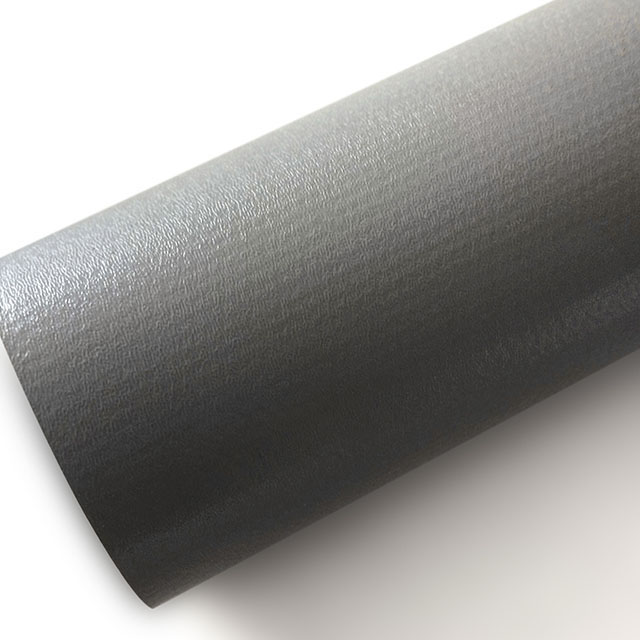
Fig. 3: Complex roof geometry influencing installation costs for rubber roofing.
Further dissecting the financial implications tied to the cost of rubber roofing membrane, it becomes evident that choosing the right system involves a nuanced trade-off between initial capital outlay and long-term operational efficiencies and asset protection. The total installed cost of rubber roofing membrane is a composite of direct material expenses, labor wages, equipment rental, and ancillary costs such as permits, waste disposal, and project management. For instance, while the material cost of rubber roofing membrane for a 60-mil EPDM might be slightly less than a comparable `tpo epdm roofing` or PVC membrane, the labor component for EPDM, often involving adhesive application across large areas and specific seaming techniques, can sometimes push the overall installation cost higher depending on the project scale and complexity. Conversely, the speed and reliability of heat-welding for TPO and PVC can offset their marginally higher material cost by reducing labor hours and ensuring superior seam integrity, which is a common point of failure in less robust systems. Moreover, the long-term maintenance requirements are directly linked to the initial quality of the membrane and its installation. A high-quality PVC membrane, known for its exceptional chemical resistance and heat-welded seams, often requires significantly less maintenance over its 30-50+ year lifespan compared to lower-grade alternatives, leading to substantial savings in operational expenditure. This reduction in maintenance directly impacts the total lifecycle cost of rubber roofing membrane. Energy efficiency is another crucial factor that affects total cost. White or light-colored TPO and PVC membranes, which qualify as "cool roofs" due to their high solar reflectivity and thermal emissivity, can dramatically reduce cooling loads in industrial facilities, leading to significant energy bill reductions. For a large-scale industrial building, these energy savings alone can recoup a substantial portion of the initial investment in a few years, making the slightly higher material `cost of rubber roofing membrane` for a cool roof system an extremely sound economic decision. Furthermore, the selection of insulation beneath the membrane plays a vital role in thermal performance and fire resistance, adding to the overall cost but providing critical energy savings and safety features. Factors like the type of insulation (e.g., polyisocyanurate, EPS, rock wool), its thickness, and the chosen attachment method (mechanically fastened, adhered) all impact the final bill. Lastly, the reputation and expertise of the roofing contractor are paramount. While a lower bid might seem attractive initially, a less experienced or unqualified contractor can lead to installation errors, warranty invalidation, and premature roof failure, ultimately resulting in much higher remediation costs. Engaging with certified and reputable installers, even if their initial bid is higher, ensures that the investment in the cost of rubber roofing membrane is protected by expert application, adherence to manufacturer specifications, and often, an extended workmanship warranty. Thus, a holistic financial evaluation must encompass all these interconnected elements to truly understand and optimize the capital and operational expenditures associated with a high-performance roofing system.
Applications and Advantages: Maximizing Value from Your Membrane Investment
The versatility and robust performance of modern roofing membranes make them indispensable across a broad spectrum of commercial and industrial applications, where their distinct advantages translate directly into long-term operational benefits and a favorable return on the initial cost of rubber roofing membrane. These membranes are the preferred choice for large flat and low-slope roofs characteristic of warehouses, manufacturing plants, logistics centers, retail establishments, schools, hospitals, and government facilities. In manufacturing environments, particularly those involving chemical processes or aggressive fumes, PVC membranes stand out due to their exceptional chemical resistance, which protects the roof from degradation and extends its service life, mitigating the risk of costly leaks and operational disruptions. For data centers and critical infrastructure, the inherent fire resistance and wind uplift performance of these membranes, often tested to stringent FM Global standards, provide unparalleled protection for sensitive equipment and ensure business continuity. The lightweight nature of these membranes also allows for installation over existing roof systems in many cases, eliminating the need for a costly and disruptive tear-off, significantly reducing the overall project cost of rubber roofing membrane and minimizing environmental impact through reduced landfill waste. Furthermore, their inherent flexibility allows them to conform to unusual roof shapes, accommodate structural movement, and integrate seamlessly with complex roof penetrations like skylights, HVAC units, and exhaust fans, ensuring a watertight seal even in challenging architectural designs. Beyond their physical resilience, the energy efficiency advantages of `tpo epdm roofing` and PVC membranes, particularly the lighter-colored options, are profound. By reflecting a significant portion of solar radiation, these "cool roofs" dramatically reduce the heat absorbed by the building, leading to substantial reductions in air conditioning loads and associated energy costs, particularly in warmer climates. This passive cooling effect not only lowers operational expenses but also contributes to a more stable indoor temperature, enhancing comfort for occupants and potentially reducing the strain on HVAC systems. The long service life of 30-50+ years, coupled with minimal maintenance requirements, further enhances the economic appeal, as it defers costly roof replacements for decades, providing predictable budgeting for facility managers. For example, our PVC Membrane offers superior weldability, creating monolithic seams that are often stronger than the membrane itself, ensuring long-term watertight integrity and resistance to ponding water, a common issue on flat roofs. This robust seaming capability, combined with inherent resistance to fungi, bacteria, and root penetration, makes our PVC membrane an ideal choice for green roofs and solar panel installations, which are increasingly common in sustainable building designs. By selecting a high-performance membrane, businesses are not just buying a roof; they are investing in a durable, energy-efficient, and low-maintenance asset that safeguards their operations and enhances their overall financial performance.
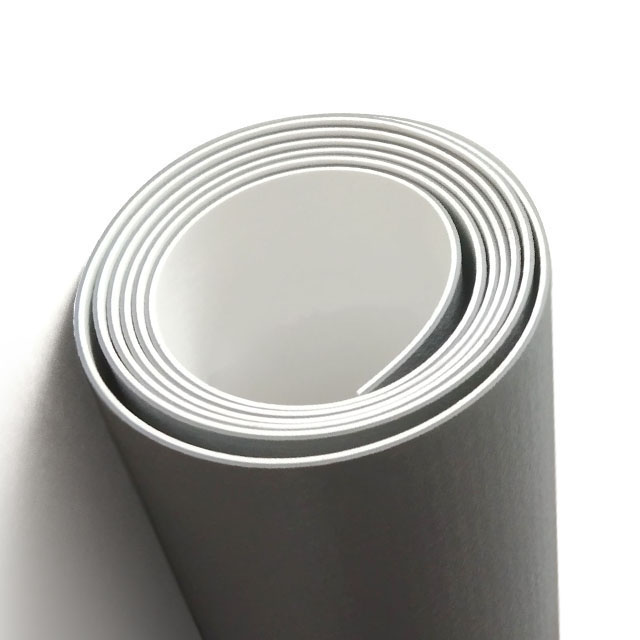
Fig. 4: A large-scale commercial building showcasing a modern roofing membrane installation.
The strategic deployment of high-performance membranes in industrial and commercial settings underscores their critical role in asset protection and operational longevity, directly influencing the long-term cost of rubber roofing membrane. Beyond their fundamental weatherproofing capabilities, these advanced systems offer a suite of advantages that cater to the evolving needs of modern facilities. Their exceptional durability against extreme weather events, including heavy rain, hail, snow loads, and high winds, minimizes the risk of catastrophic roof failure and associated business interruption. This resilience is particularly vital in regions prone to severe climatic conditions, where the cost of roof repairs or replacements can be staggering. The low maintenance characteristic of these membranes is another significant economic benefit. Unlike traditional roofing materials that may require frequent inspections, patching, or re-coating, high-performance membranes, especially those with robust heat-welded seams like PVC and TPO, often demand only periodic cleaning and routine inspections, drastically reducing ongoing operational expenses and the need for dedicated maintenance crews. This reduction in maintenance directly reduces the total lifecycle cost of rubber roofing membrane. Moreover, the inherent lightweight property of these membranes places less structural load on the building, which can be a critical design consideration for older structures or those with limited load-bearing capacity. This also facilitates quicker and safer `installing rubber roof membrane` processes, further contributing to project efficiency and cost savings. The "cool roof" capabilities, particularly strong in white `tpo epdm roofing` and PVC variants, extend beyond just energy savings. By reducing the ambient temperature around the building, they contribute to a more comfortable working environment, potentially improving worker productivity and reducing heat-related stress on roof-mounted equipment, thereby extending their lifespan. In specialized applications, such as roofs supporting extensive solar panel arrays or "green roofs" with vegetated systems, the high puncture resistance, root resistance, and robust seam integrity of membranes like PVC are indispensable. They provide a reliable, watertight foundation for these complex installations, protecting the underlying structure from water ingress and ensuring the longevity of the entire integrated system. The ability to customize membrane formulations for specific chemical exposures, high foot traffic, or unique environmental conditions further enhances their value proposition for niche industrial applications. For instance, our PVC membrane is engineered for superior resistance to a wide array of industrial chemicals, greases, and oils, making it an ideal choice for manufacturing facilities, chemical plants, and restaurants where such exposures are common. This specialized resistance prevents premature degradation, ensuring the long-term performance and maximizing the return on the cost of rubber roofing membrane investment. In essence, opting for a high-performance roofing membrane is a strategic decision that fortifies a facility against environmental challenges, optimizes energy consumption, minimizes long-term operational costs, and provides a resilient platform for future growth and sustainable initiatives.
Manufacturer Comparison, Custom Solutions, and Installation Expertise
The selection of a roofing membrane manufacturer is as critical as the choice of the membrane type itself, profoundly influencing the product's quality, warranty, technical support, and ultimately, the long-term value derived from the initial cost of rubber roofing membrane. While numerous manufacturers offer `tpo epdm roofing` and PVC products, their distinctions often lie in raw material sourcing, manufacturing precision, quality control protocols, product innovation, and customer service. Reputable manufacturers, such as Gardepota, invest heavily in research and development to enhance product performance, offering advanced formulations with superior UV resistance, chemical stability, flexibility, and fire ratings. They also adhere to stringent international quality management systems like ISO 9001, ensuring consistency and reliability across their product lines. This commitment to quality translates into membranes that not only meet but often exceed industry standards, thereby extending the roof's lifespan and reducing the overall lifecycle cost of rubber roofing membrane. When comparing manufacturers, it's essential to scrutinize their product specifications, available thicknesses (`epdm roof membrane thickness` or equivalent for TPO/PVC), and a comprehensive range of accessories, as a complete system from a single source often ensures compatibility and simplifies warranty claims. Beyond standard offerings, the ability to provide custom solutions is a significant differentiator for complex industrial projects. This can include manufacturing membranes in non-standard widths or lengths to minimize seams on expansive roofs, producing specialized colors for aesthetic or specific heat-reflectivity requirements, or formulating membranes with enhanced resistance to particular chemicals relevant to a client's operations. Pre-fabricated details for complex penetrations, corners, and parapet walls can also significantly accelerate installation and improve long-term watertightness, reducing the labor component of `installing rubber roof membrane` and mitigating potential failure points. For large-scale projects, some manufacturers offer project-specific technical support, including detailed CAD drawings, wind uplift calculations, and on-site training for installation teams, ensuring that the system is installed to the highest standards. The long-term performance and durability of a roofing system are inextricably linked to the quality of its installation. Even the most advanced membrane will fail prematurely if improperly installed. Therefore, selecting a roofing contractor with proven expertise in `installing rubber roof membrane` is paramount. Certified contractors, often endorsed by membrane manufacturers, possess the requisite training, experience, and specialized equipment to execute installations in accordance with manufacturer specifications and industry best practices. Their expertise in substrate preparation, membrane layout, seaming techniques (especially heat welding for TPO and PVC), flashing details, and quality assurance during the installation process is critical for ensuring watertight integrity and activating the full manufacturer warranty. A thorough bidding process should not only evaluate the initial cost of rubber roofing membrane but also the contractor's reputation, safety record, insurance coverage, and ability to provide references from similar projects. Investing in expert installation minimizes the risk of costly post-installation repairs, reduces long-term maintenance burdens, and ultimately maximizes the return on the roofing investment, securing the asset for decades to come.
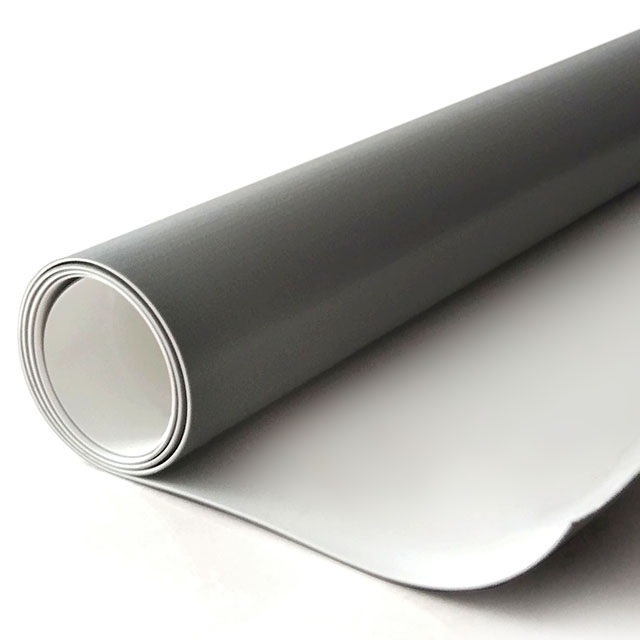
Fig. 5: Skilled technicians meticulously installing a high-performance roofing membrane.
The interplay between manufacturer credibility, the provision of tailored solutions, and the proficiency of installation significantly impacts the long-term viability and total cost of rubber roofing membrane. A manufacturer's reputation is built not only on the intrinsic quality of its products but also on its commitment to comprehensive technical support and rigorous post-sales service. This includes readily available technical data sheets, specifications, CAD details, and access to a team of engineers and technical advisors who can assist with complex project designs, material selection, and troubleshooting. For instance, a manufacturer with a robust training program for installers ensures that their products, including our Gardepota PVC Membrane, are applied correctly, adhering to the nuances of heat welding for optimal seam strength, which is a critical determinant of the roof's watertightness and longevity. This level of support helps mitigate risks and potential future costs associated with improper installation, directly contributing to a lower overall lifecycle cost of rubber roofing membrane. Furthermore, the ability of a manufacturer to offer specialized solutions is paramount in a B2B context where unique industrial requirements are common. This might involve producing membranes with enhanced chemical resistance for specific industrial effluents, anti-static properties for sensitive electronic environments, or reinforced membranes for extreme wind uplift regions. Such custom engineering ensures that the roofing system is perfectly aligned with the operational demands of the facility, providing tailored protection that standard off-the-shelf products cannot. The efficiency and quality of `installing rubber roof membrane` are also significantly influenced by the manufacturer's packaging and logistics. Large, precisely cut rolls, clear labeling, and timely delivery schedules minimize on-site handling, reduce waste, and keep the project on track, directly impacting labor efficiency and project costs. The ongoing advancements in `tpo epdm roofing` and PVC technologies, driven by leading manufacturers, also introduce innovative products that offer improved performance-to-cost ratios. This could include membranes with integrated reflective coatings for enhanced energy efficiency, self-adhering options for quicker installation, or membranes designed for specific environmental certifications like LEED or Green Globes. When evaluating the cost of rubber roofing membrane, decision-makers should consider the manufacturer's track record, the breadth of their product portfolio, their commitment to sustainability, and the strength of their warranty. A comprehensive warranty that covers both material defects and installation workmanship (when performed by certified applicators) provides crucial financial protection against unforeseen issues, making the initial investment more secure. Ultimately, partnering with a reputable manufacturer and a highly skilled installation team transforms the expenditure on the cost of rubber roofing membrane from a mere purchase into a strategic, long-term asset investment that secures the structural integrity, operational efficiency, and financial health of the facility for decades.
Authoritativeness, Trustworthiness, and Lifecycle Value
In the B2B sphere, especially concerning critical infrastructure like roofing, establishing authoritativeness and trustworthiness is paramount for manufacturers and suppliers. This isn't merely about marketing; it's about demonstrating a profound understanding of industry standards, a commitment to quality, and a track record of reliable performance that directly impacts the long-term cost of rubber roofing membrane. Our company exemplifies this through adherence to stringent industry certifications such as ISO 9001 for Quality Management Systems, ensuring that every stage of manufacturing, from raw material procurement to finished product testing, meets the highest international benchmarks. Furthermore, compliance with ISO 14001 for Environmental Management Systems underscores our commitment to sustainable practices, minimizing environmental impact throughout the product lifecycle. Product-specific certifications, like ASTM (American Society for Testing and Materials) standards for physical properties (e.g., tensile strength, elongation, tear resistance for `epdm roof membrane thickness` and others), FM Global (Factory Mutual) for fire resistance and wind uplift ratings, and UL (Underwriters Laboratories) classifications for fire safety, provide independent verification of our membranes' performance under extreme conditions. These certifications are not just badges; they are critical benchmarks that building codes and insurance companies often mandate, directly influencing a facility's operational safety and insurability. Our long service history in the industry, spanning numerous years, coupled with a portfolio of successful installations in diverse sectors—from petrochemical complexes to large commercial distribution centers—serves as tangible proof of our experience and reliability. Strategic partnerships with leading architects, engineers, and general contractors further solidify our position as an authoritative voice in advanced roofing solutions. We emphasize complete transparency, providing detailed technical data sheets, installation guides, and case studies that offer insights into real-world performance and client satisfaction. Our rigorous quality assurance processes include continuous in-house testing and third-party verification, ensuring that every batch of membrane consistently meets specified performance criteria. When considering the cost of rubber roofing membrane, it is crucial to factor in the peace of mind derived from partnering with a trusted supplier whose products are backed by robust testing and comprehensive certifications, as this significantly reduces the risk of premature failure and costly remediation in the future.
Building trustworthiness extends beyond certifications to encompass comprehensive customer support, transparent business practices, and tangible commitments to product performance and longevity, all of which indirectly influence the total cost of rubber roofing membrane. We offer an extensive FAQ module that addresses common inquiries regarding product specifications, installation best practices for `installing rubber roof membrane`, maintenance routines, and troubleshooting tips, empowering clients with readily accessible information. Transparency in our delivery cycle is critical for large-scale industrial projects. We maintain efficient supply chain logistics to ensure timely delivery of materials globally, minimizing project delays and associated cost overruns. Our commitment to quality is underscored by our robust warranty commitments, which typically include long-term material and workmanship warranties (e.g., 20-30 years, depending on the product and application). These warranties are comprehensive, clear, and easy to understand, providing clients with financial protection and a guarantee of performance. Beyond the initial sale, our dedicated customer support team provides ongoing technical assistance, site visits, and training programs for installers and facility maintenance staff, ensuring optimal performance throughout the roof's lifespan. This proactive support helps prevent issues before they escalate, reducing potential repair costs and maximizing the return on the initial cost of rubber roofing membrane investment. For instance, for complex projects involving `tpo epdm roofing` or PVC, our technical specialists can provide detailed project-specific guidance, from substrate analysis to heat welding parameters, ensuring every aspect of the installation is optimized for durability and watertightness. Our internal testing laboratories continuously monitor and evaluate membrane performance, incorporating feedback from field applications and industry advancements to refine our products. Regular updates to product documentation and training materials reflect these continuous improvements. Furthermore, we provide detailed case studies and customer testimonials that highlight successful implementations of our roofing systems in diverse industrial environments, showcasing quantifiable benefits such as energy savings, reduced maintenance, and extended roof life. These real-world examples serve as powerful endorsements of our product quality and service reliability. By focusing on these pillars of authoritativeness and trustworthiness—from stringent quality control and industry certifications to comprehensive customer support and transparent warranties—we aim to provide not just a product, but a complete roofing solution that offers unparalleled long-term value, peace of mind, and a significant reduction in the total lifecycle cost of rubber roofing membrane for our B2B partners. This holistic approach ensures that every investment in our high-performance membranes translates into a durable, resilient, and economically beneficial asset for decades to come.
Frequently Asked Questions (FAQ)
-
Q: What factors most significantly impact the cost of rubber roofing membrane?
A: The primary factors influencing the cost of rubber roofing membrane include the type of membrane (EPDM, TPO, PVC), its thickness (e.g., `epdm roof membrane thickness`), the complexity of the roof design, labor rates for `installing rubber roof membrane`, geographical location, and the quality of accessories required. Thicker membranes and more intricate installations generally lead to higher upfront costs but often result in lower long-term maintenance and replacement expenses.
-
Q: How does `epdm roof membrane thickness` affect its performance and cost?
A: Greater `epdm roof membrane thickness` (e.g., 90 mil vs. 45 mil) generally correlates with enhanced durability, superior puncture resistance, and a longer expected service life, often qualifying for extended warranties. While a thicker membrane will increase the initial cost of rubber roofing membrane, it translates to a lower lifecycle cost due to reduced repair needs and deferred replacement over decades, offering a higher return on investment for critical assets.
-
Q: What are the key differences between `tpo epdm roofing` and PVC membranes regarding cost and performance?
A: EPDM is a thermoset rubber typically seamed with adhesives, offering high elongation and excellent cold weather performance, often with a lower material cost of rubber roofing membrane. TPO and PVC are thermoplastics, heat-welded for monolithic seams, providing superior puncture/tear resistance and chemical resistance (especially PVC), along with excellent cool roof properties. While initial `tpo epdm roofing` and PVC material costs might be slightly higher, their robust seaming and specific performance advantages can lead to lower total installed and lifecycle costs, particularly for environments requiring high chemical resistance or robust, long-lasting seams.
-
Q: What is the typical lifespan for these high-performance membranes, and how does it relate to the cost of rubber roofing membrane?
A: High-quality EPDM and PVC membranes, when properly installed and maintained, can have a service life exceeding 30-50 years, while TPO typically lasts 20-30+ years. This extended lifespan significantly amortizes the initial cost of rubber roofing membrane over a longer period, resulting in a much lower annualized cost compared to shorter-lived roofing systems. The long-term durability reduces the frequency of costly replacements, offering significant lifecycle savings.
-
Q: What kind of warranty can I expect when investing in a high-performance roofing membrane, impacting the cost of rubber roofing membrane?
A: Reputable manufacturers offer comprehensive warranties ranging from 10 to 30 years, often covering both material defects and labor (when installed by certified contractors). These warranties provide financial protection against premature product failure and installation issues, safeguarding your investment and mitigating long-term risks, thus reducing the effective lifecycle cost of rubber roofing membrane by ensuring product and installation reliability.
Conclusion: Strategic Investment in Long-Term Roofing Performance
The decision to invest in a high-performance roofing membrane for commercial or industrial facilities is a complex one, extending far beyond the immediate cost of rubber roofing membrane. As this comprehensive analysis has elucidated, a truly informed choice necessitates a holistic evaluation that encompasses material science, manufacturing precision, technical specifications, installation complexities for `installing rubber roof membrane`, and the overarching lifecycle value. While the initial investment in a premium membrane, whether it's EPDM, `tpo epdm roofing`, or our specialized PVC Membrane, may appear higher than conventional roofing options, this upfront expenditure is consistently offset by profound long-term savings and operational advantages. These include significantly extended service life, drastically reduced maintenance requirements, substantial energy cost reductions through cool roof properties, and enhanced protection against environmental stressors and chemical exposures. The meticulous manufacturing processes, adherence to international quality standards, and the provision of robust technical support from reputable manufacturers ensure that these membranes deliver consistent and predictable performance for decades. Furthermore, the critical role of expert installation cannot be overstated; a skilled and certified contracting team ensures that the inherent quality of the membrane is fully realized, preventing costly premature failures and upholding warranty validity. For B2B decision-makers, engineers, and facility managers, understanding the intricate relationship between the initial `cost of rubber roofing membrane` and its pervasive impact on long-term operational efficiency, asset protection, and financial returns is paramount. By prioritizing durability, energy efficiency, and low maintenance over short-term savings, organizations can secure a resilient, sustainable, and economically advantageous roofing solution that safeguards their critical assets, minimizes operational disruptions, and contributes positively to their bottom line for decades to come. This strategic foresight in roofing investment transforms what might seem like a mere expense into a foundational element of a robust and sustainable industrial infrastructure, ensuring the continued success and integrity of operations in an increasingly demanding global landscape.
References & Further Reading:
- National Roofing Contractors Association (NRCA) - Single-Ply Roofing Systems. Provides technical guidance and best practices for commercial roofing.
- ASTM International Standards - Roofing and Waterproofing. Source for material testing and performance standards relevant to roofing membranes.
- Cool Roof Rating Council (CRRC) - Technical Resources. Information on solar reflectance and thermal emissivity for energy-efficient roofs.
- Buildings.com - Understanding Commercial Roofing Costs. Industry insights on factors influencing commercial roofing expenditures.
- Roofing Industry Committee on Weather Issues (RICOWI) - EPDM vs. TPO. A comparative study often cited in industry discussions on single-ply membranes.



